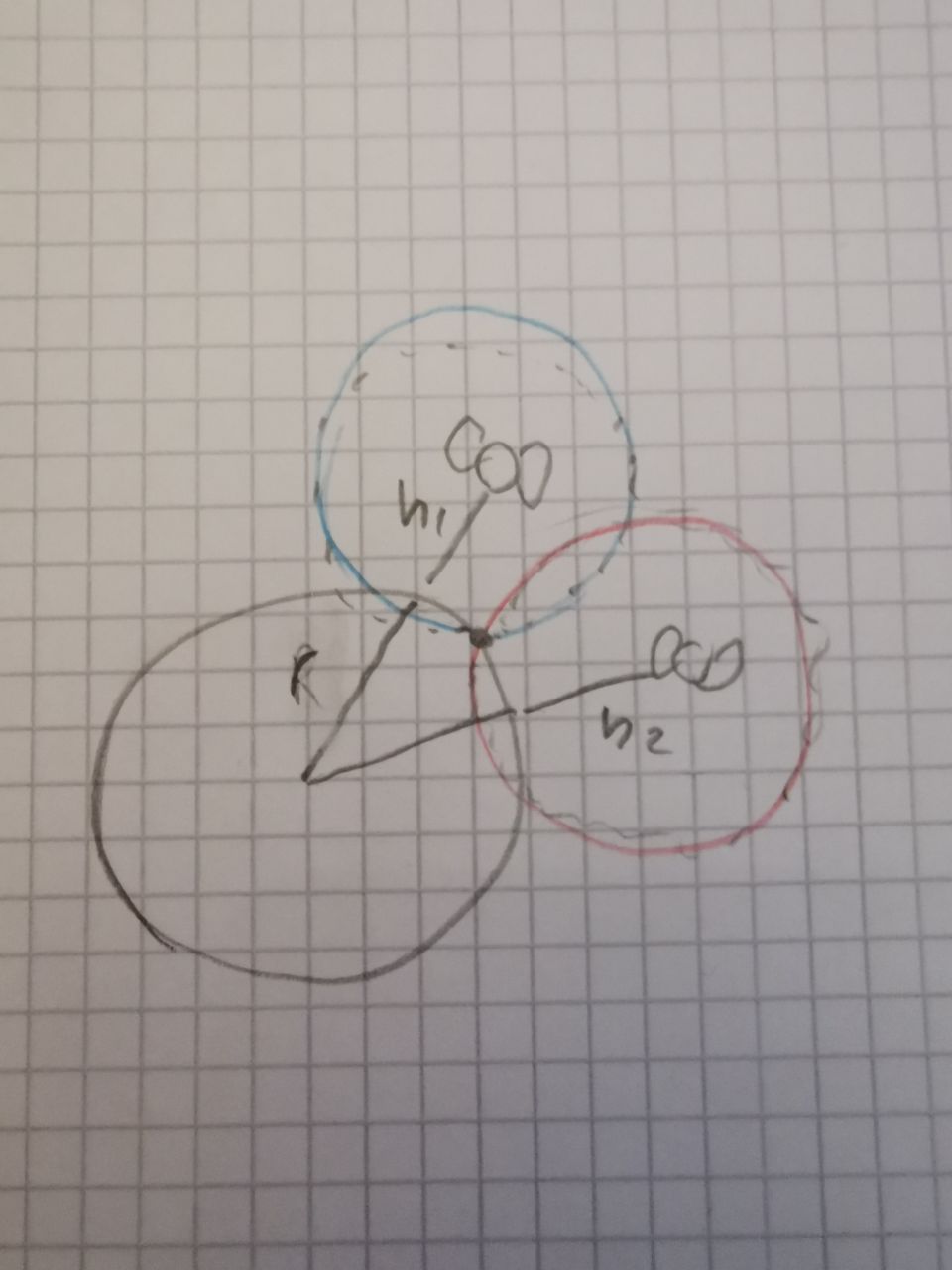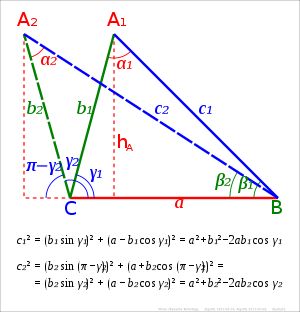(since my MCAst won't work, I'll jsut be detailing the general method here)
We just sent up a bunch of sattelites to help our jelly citizens navigate our new home more easily, but we ran into a slight issue of possition drifting. For some reason the sattelites just kept showing less and less correct possitions and we had some of our experts take a look.
First let's look a bit at how we find our possition using a sattelite like this.

If we know the x and y coordinates of each sattelite all you need to do is use pythagoras on these and subtract the radius of the planet in order to find the height at which they are orbiting: \(R = r + h => h = R-r\), Where h is the height above the planet surface.
Assuming the sattelites maintain a stable orbit, we can next use N2L: the sum of forces = 0 means v is constant. Meaning the centripetal force is equal to the gravitational force, giving us: ac = g => \(a_c = \frac {v^2} R = \omega^2R = (\pi n_{rpm})^2 R\)

Next we find the distance between the sattelite and ourselves by using the given formula: \(|\vec r_{sat} -\vec r|\) we don't know our own possition initially, but since we know the sattelites possitions, and we're taking no relativistic effects into account we can find this distance by using \(\Delta t *c = |\vec r_{sat} -\vec r| => \Delta t = \frac{|\vec r_{sat} -\vec r|} c\) which tells us the distance light has travelled from the sattelite to us, which gives the same value at the initial possition.

With knowing both the height and the distance between the sattelite and ourselves we should be able to find the angle, using the cosine rule depicted to the left, in order to find this.
Finally we were planning on using a trilateration type concept like we did during the sattelite possition part of our planetary journey here. Where the radius of the planet is the one point of reference and each sattelite will 'form a ring' with a radius equal to our distance from them, and when all three intersect we have our possition.
But this is all well and good, yadayada, this is stuff we already figured out, why on earth are they still wrong?!
Well, the reason for this is due to us being within an accelerated field from the very planet we're standing on. This will lead to time flowng differently for objects farther away from the mass itself. The time dialation experienced between us on the ground and the sattelites will be: \(t_0 = t_{sat}\sqrt{1 - \frac{2M}{r}} \) in relativistic units.
To correct for our prior mishap; we the simply plop these new time values in for the old ones in our \(\Delta t\)-expression, to find the actual distance. Then subtract this from our origional answer in order to find the margin of error. And oulala, we have an accurate GPS!
As the sattelites float over the sky they have their experienced time will be less than someone on the ground, due to it being dialated less by earths gravitational field than our clocks here on the ground. Thus, if we assume their clocks aren't running differently from our own their way of tracking our possition will become incredibly innacurate. Since the way they track our time is by measuring the distance between us and themselves using time and lightspeed, this means they will be more and more off as they send out times that are more and more off as they go, given they're not corrected for. Since their measurement of possition relies solely on the time and speed of light the fact that the time is off by as little as 10-8s, is enough to drift our position by as much as 3 metres, the change however, will usually result in a drift of a few hundread within a the day when no correcton is applied.
When the GPS is left uncorrected the time will keep drifting more and more due to time dialation. The clocks in the sattelites run at slower rates than the earth clocks due to being in a weaker part of the gravitational field and henceforth a different frame of reference. Their time will also be slightly affected by special relativity due to having a slight velocity, although the former will have more of an impact here, as their velocity isn't very close to light speed, although taking this into consideration as well would help make the measurements even more solid. If you were to let the GPS drift for long enough they'd reach a point where they've drifed far enough to where the dialation is at something like an hour or a whole day, in which case it's kind of like a soft reset. This takes a very long time though, though they might become useful for a very brief time here, but to be of any use in our everyday life, their times must be corrected for or we quickly have a margin of error of a few kilometres due to the incredible distance light can cover in a short amount of time (this incerdible speed is also what magnifies the error so much).
pervious next